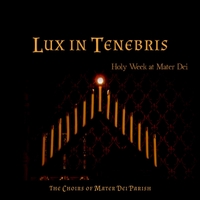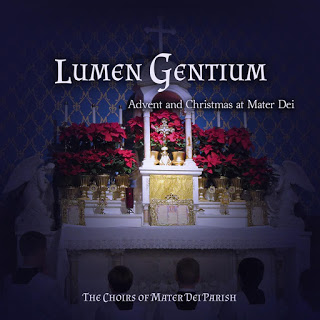Over the last weeks I have been collaborating with our parish’s assistant choir director to provide some two and three part pieces for the women’s schola and girl’s choir. Among the pieces requested was a setting of O Magnum Mysterium with violin accompaniment. This was the first piece I composed from the list, and I have made three variations of it: SA + Violin, SAA, and SSAA. The latter variations are sung a cappella.
The scores may be freely downloaded at the bottom of the post and are licensed under Creative Commons (CC-BY-NC-ND).
SA + Violin Variation
SAA Variation
This variation removes the violin solo sections and converts the remaining violin accompaniment to an alto voice. The O Beata sets the violin down an octave for the second alto part. In measure 74, D may be a bit on the high side for the Alto voice, but at least Finale does not complain that it is altogether out of range for that voice.
SSAA Variation
This variation requires a soprano vocalist with a delicate high C, as it takes the violin accompaniment of O Beata at pitch. Most of the setting is still SAA elsewhere, but I added another contrapuntal line to the Alleluia at the end.
Discussion and Interpretation
This setting includes the versicle and response, as well as the alleluia. Set in E-minor, it places the piece in a comfortable key for the violin, though exercising the full lower range of the instrument (including open G string).
The melodic lines play around with C and C#, sometimes drawing the sound closer to B-minor, at other times staying within E-minor. All twelve notes of the chromatic scale appear somewhere within the piece. B-flat makes its appearance somewhat unexpectedly in Dominum natum jacentem in praesepio. My thought at this point was this: under normal circumstances, what mother would lay her newborn son in a place from which animals eat? How mysterious that the greatest and most perfect of mothers should place the Lord of Heaven in a manger!
I hope that O Beata expresses a sublime ecstasy, but maybe that is hoping for a bit much. It may just be my own ear or the electronic playback, but I really like how in the four part Jesum Christum of the SSAA version (measure 72 at the high C), the A-minor chord following C-major does not sound minor.
The alleluia at the end has some affinity to the beginning, but it plays games with F, F#, G, and G#, in addition to C and C#. Here, it seems as if we have temporarily suspended the key but not tonality. I hope it describes a beautiful mystery.
About the Featured Image
The featured image is The Nativity by Frederico Barocci. It is in the public domain in the United States, according to Wikipedia.






I would love to work on the SSAA for my quartet. The high-c’s are a bit overbearing in the current key, do you happen to have a transposition available (ideally down a 3rd)??
Hello Heidi, I’m honored you’re interesting in my composition. I’ve added a version down a third (C-minor). The two Alto lines became very low, so to keep them from running into the lyrics, I used a treble clef transposed down an octave on those two lines. Both lines in the transposed version are more or less now in the Tenor range.
Thank you so much for this! I will show it to my colleagues and see what they think. It’s a lovely setting 🙂